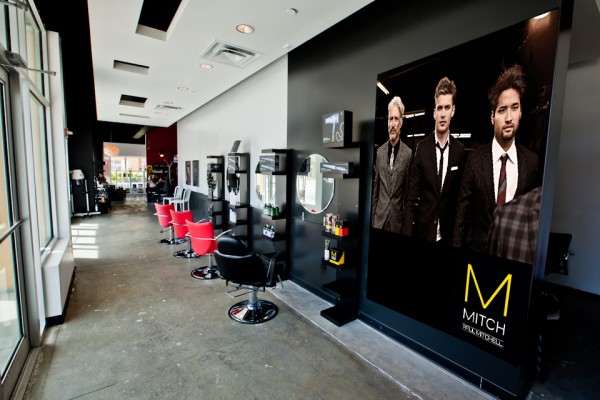When I explain my research to people, they often ask: “What is a men’s salon, exactly?”In a fleeting interaction I might simply describe it as a salon dedicated to the primping and preening of men. The high-service men’s salons in my study tout stylish haircuts, fine manicures, exfoliating facials, and meticulous waxing services. But to more accurately explain what a men’s salon is involves understanding that gender is actively produced, not a static characteristic of a person or place.
In my article, “Men Wanted”: Heterosexual Aesthetic Labor in the Masculinization of the Hair Salon, I tackle the organizational efforts that make the salon an “appropriate” place for well-to-do, straight, and often white men. This is significant since the salon is historically associated with women and seems an unlikely place in which men can approximate culturally valorized forms masculinity. One way both salons in my study masculinize the space is by demanding what I call heterosexual aesthetic labor from the mostly women workers. Aesthetic labor highlights the importance of workers’ appearances and use of their body in frontline service work, where employees interact face-to-face with customers. Workers are hired because they embody the aesthetic values of a retail brand, with white, middle-class workers, for example, reflecting the identities of white, middle-class consumers. This assures consumers they are in the “right place” for people like them and is a key mechanism in reproducing social differences and inequalities.

When we look at retail organizations and brands, though, we shouldn’t overlook the role of sexuality in aesthetic labor. This is clear in my fieldnotes and interviews with the employees and clients at both salons. These data reveal that the organizations hire heterosexual, feminine looking women to act as identity resources for men’s momentary projections of straight masculinity, which might otherwise come under suspicion at the salon. I show how the organizations I studied hire straight, conventionally feminine women, develop these women’s appearances, and use them to represent the salons’ “brands.” For example, Trish, a 29-year-old massage therapist, and the only queer identifying participant in my study, was acutely aware that the salon employs pretty straight women:
“I don’t know how I got the job. I had longer hair then, that’s probably why. [Tyler, the owner,] didn’t know I was queer then. But he definitely wants to know if they’re cute… Tyler definitely hires pretty girls, for sure. And if you show up without makeup on, he’ll be mad.”
Trish sees herself as having slipped through the cracks of otherwise consistent hiring criteria that conflates long hair and makeup with straight womanhood. These women appear on postcards and in commercials, while the few men who cut hair at these places are absent from marketing efforts.
Unlike sexy women hired at Hooters and who appear on the restaurant’s billboards for hot wings, the women working at my salons serve the corporate function of combatting narrow, culturally entrenched ideas about who goes to high-service salons: women and gay men. And this is indeed work for women, who shoulder the burden of neutralizing the interpersonal effects of institutionalized heterosexual aesthetic labor. In other words, they are each individually responsible for dealing with daily negative outcomes of the salons’ larger sexual cultures.
The salons’ clients pick-up on and exercise their “right” to the women’s bodies and sexualities. Their ogling and flirting creates dilemmas for these workers who then engage professionalizing and essentializing rhetoric to manage this objectification. These dilemmas were often justified with a casual “boys will be boys” attitude that allows interactions with clients to continue uninterrupted. All of this works to commodify the women’s heterosexual identities and the agency they deploy to deflect unwelcome sexual attention while also supporting a masculine brand image and a heteromasculinizing consumer experience.
So, when people ask me what a men’s salon is, I have a lot to say. And most of it is about how hard women are asked to work and what they are required to endure to make salons into spaces straight men might frequent.
*This post was first published on the Gender & Society blog, https://gendersociety.wordpress.com. Barber’s new book, Styling Masculinity: Gender, Class, and Inequality in the Men’s Grooming Industry, is available, here.
